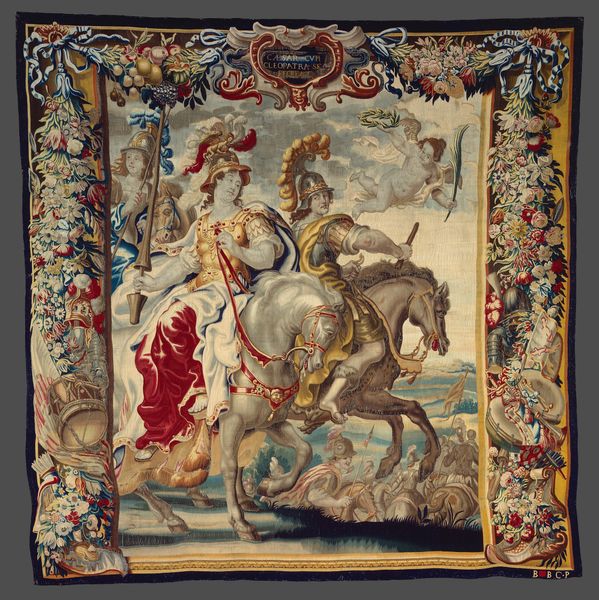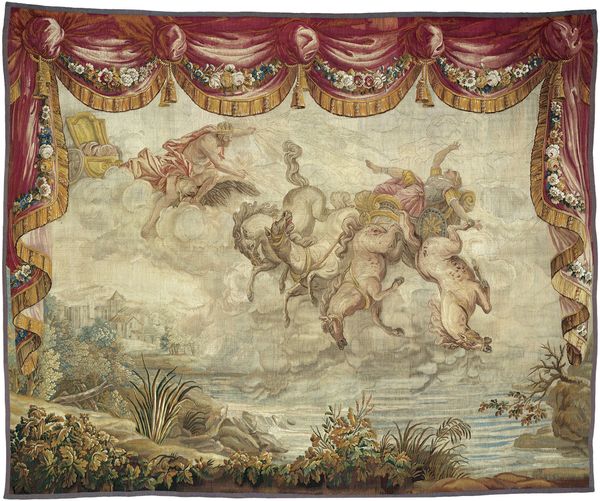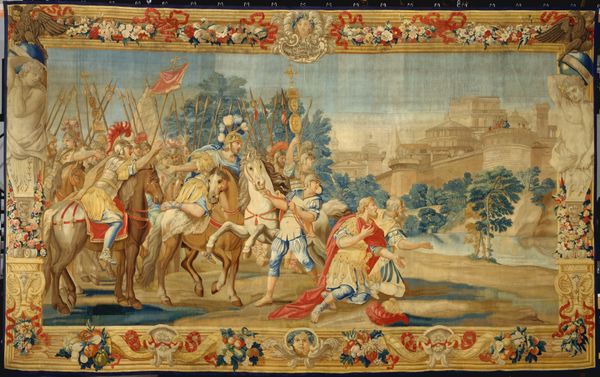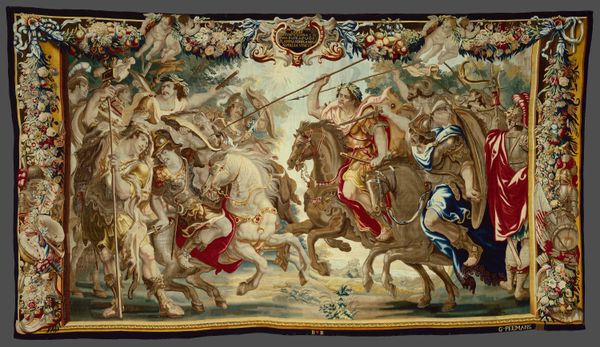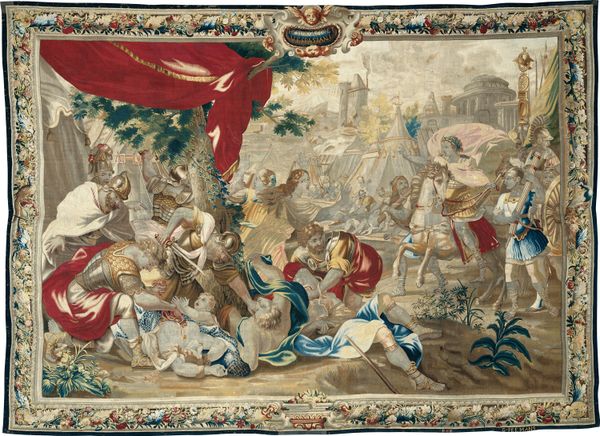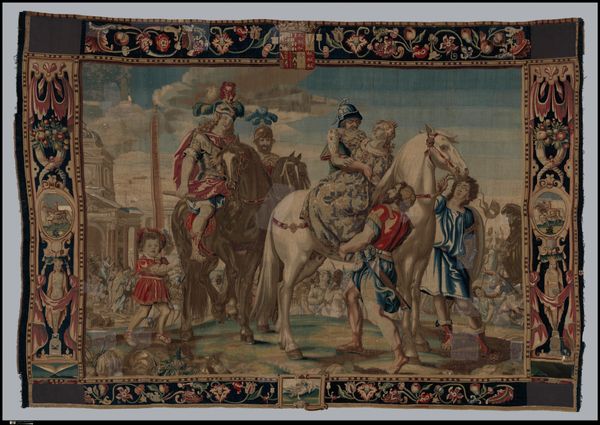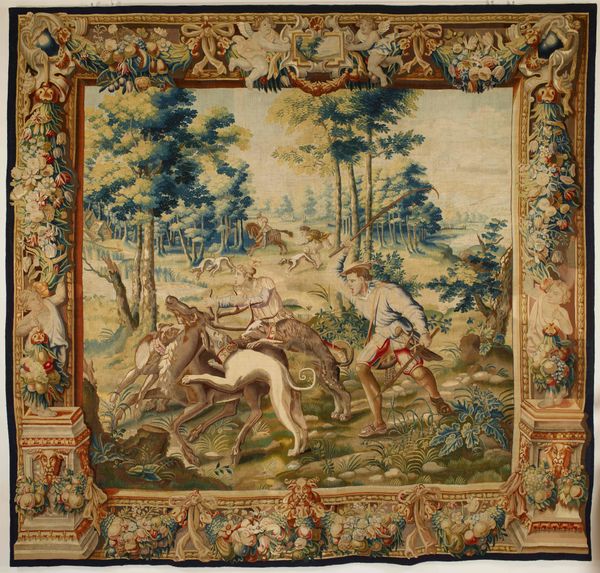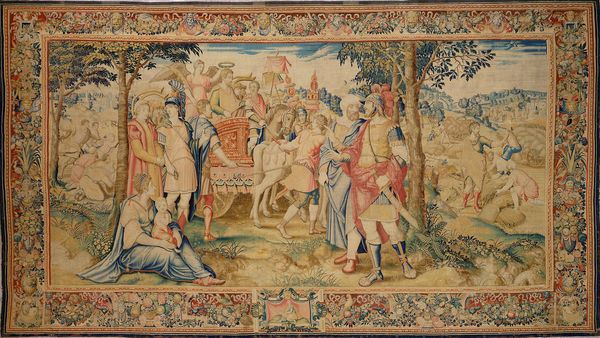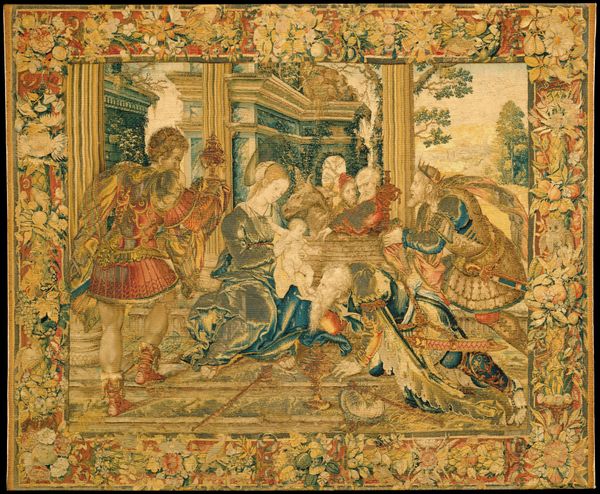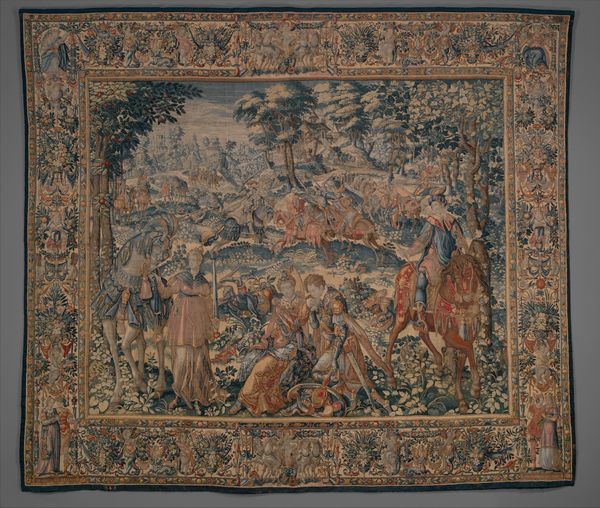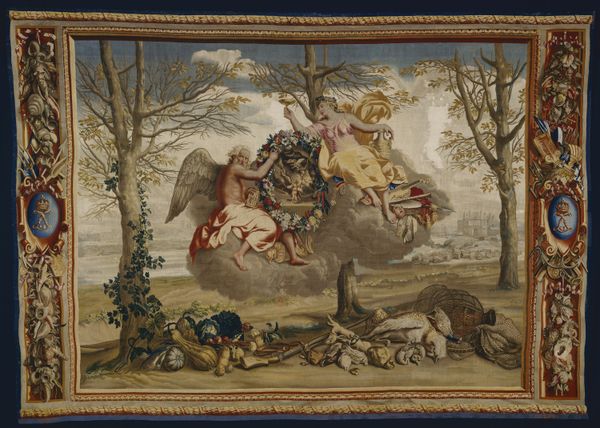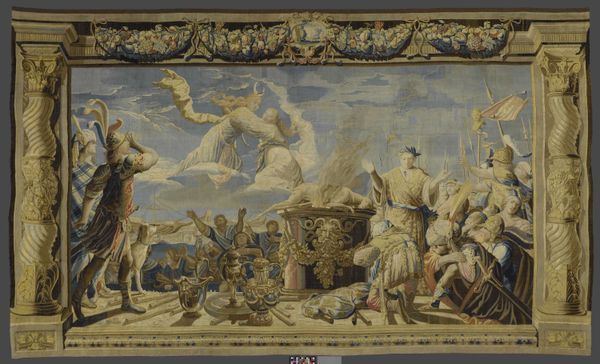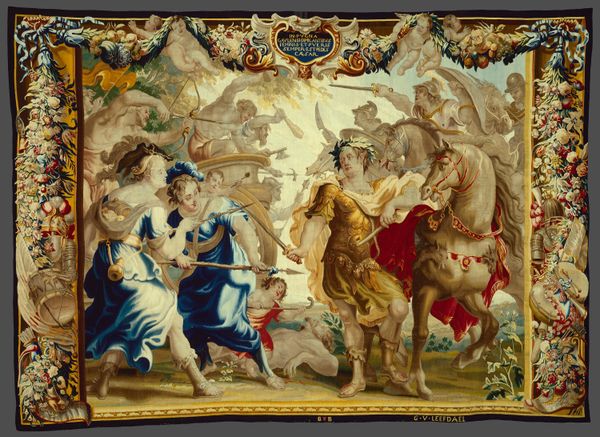
The Destruction of the Children of Niobe from a set of "The Horses" 1645 - 1675
0:00
0:00
weaving, textile, sculpture
#
water colours
#
narrative-art
#
baroque
#
weaving
#
landscape
#
textile
#
figuration
#
sculpture
#
history-painting
#
decorative-art
#
mixed media
Dimensions: Overall: 152 × 232 (386.1 × 589.3 cm)
Copyright: Public Domain
Editor: Here we have "The Destruction of the Children of Niobe" by Frans Cleyn, a weaving created between 1645 and 1675. What immediately strikes me is the dynamic composition. The horses seem to leap from the textile, conveying a powerful sense of action. What do you make of the interplay between the figures and the landscape? Curator: The eye is undoubtedly drawn to the diagonals created by the rearing horses and the figures upon them. Note how Cleyn utilizes color to delineate foreground from background; the earth tones emphasize the fallen figures, pushing them forward in space, whilst the cooler blues create recession, depth. What is your reading of the border, surrounding this scene? Editor: I hadn't focused on the border much, actually! The floral motifs are certainly decorative, a common characteristic of Baroque design, I believe. But, are they simply ornamental, or could they contribute to the narrative in some way? Curator: Observe how the repeated floral pattern, with its tight composition and artificial color, sharply contrasts with the dynamism found in the weaving’s central field. This duality might function as a comment regarding the artificiality of heroism or, perhaps, on our impulse to reduce grand narratives into tidy decorative schema. Editor: That's a very insightful perspective. I hadn't considered the border's contribution beyond its purely ornamental function. It’s fascinating how the tension between the chaos of the central scene and the order of the border can add layers of meaning. Thank you for guiding my understanding of this work. Curator: The complexities arise precisely in those formal tensions and articulations. The power of visual art resides in these juxtapositions, which we, as viewers, are invited to interpret.
Comments
No comments
Be the first to comment and join the conversation on the ultimate creative platform.
